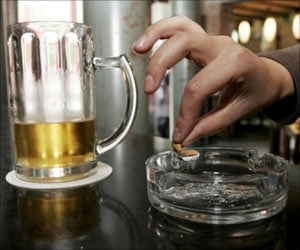Opioid dependence or overdose (ODO) was experienced by patients who undergo urologic surgery, finds a new study.

‘Opioid dependence or overdose (ODO) among patients who undergo urologic surgery has been documented.’





The study by co-first authors Arpeet Shah, MD, and Robert Blackwell, MD, and senior author Gopal Gupta, MD, is published in the Journal of Urology.The opioid epidemic is a growing problem in the United States. Every day, more than 90 Americans die after overdosing on opioids, and the economic burden of prescription opioid misuse in the United States totals $78.5 billion per year, according to the National Institute on Drug Abuse. In 2012, 259 million prescriptions were written for opioids - enough to supply every American adult with a prescription.
"With the rates of opioid dependence and overdose skyrocketing and physician prescriptions representing the center of the supply chain, it is imperative for surgeons to balance the pain-control needs of patients with the devastating consequences of America's epidemic," researchers wrote.
Opioids are a class of drugs that include illegal drugs such as heroin and legal pain relievers including Oxycontin, Vicodin, codeine and morphine.
"It is a surgeon's ethical duty and legal responsibility to help minimize patient discomfort after surgery," Loyola researchers wrote. "However, the ubiquitous use of opioids has led to a growing epidemic of addiction, dependence and overdose."
Advertisement
Urologic surgeries include kidney stone removals, hernia repairs and surgeries involving the prostate, kidney and bladder. Overall, 0.09 percent of patients were diagnosed with ODO within a year of surgery. This is consistent with findings from previous studies.
Advertisement
The highest rates of ODO occurred among patients who underwent kidney stone procedures (0.15 percent) or major kidney surgery (0.12 percent).
Physicians can reduce ODO by implementing such measures as screening for ODO risk factors when scheduling surgery and using the shortest duration and lowest effective doses possible. No patient should be prescribed opioids for more than two weeks, and patients should be re-evaluated to determine whether refills are necessary.
Source-Eurekalert













